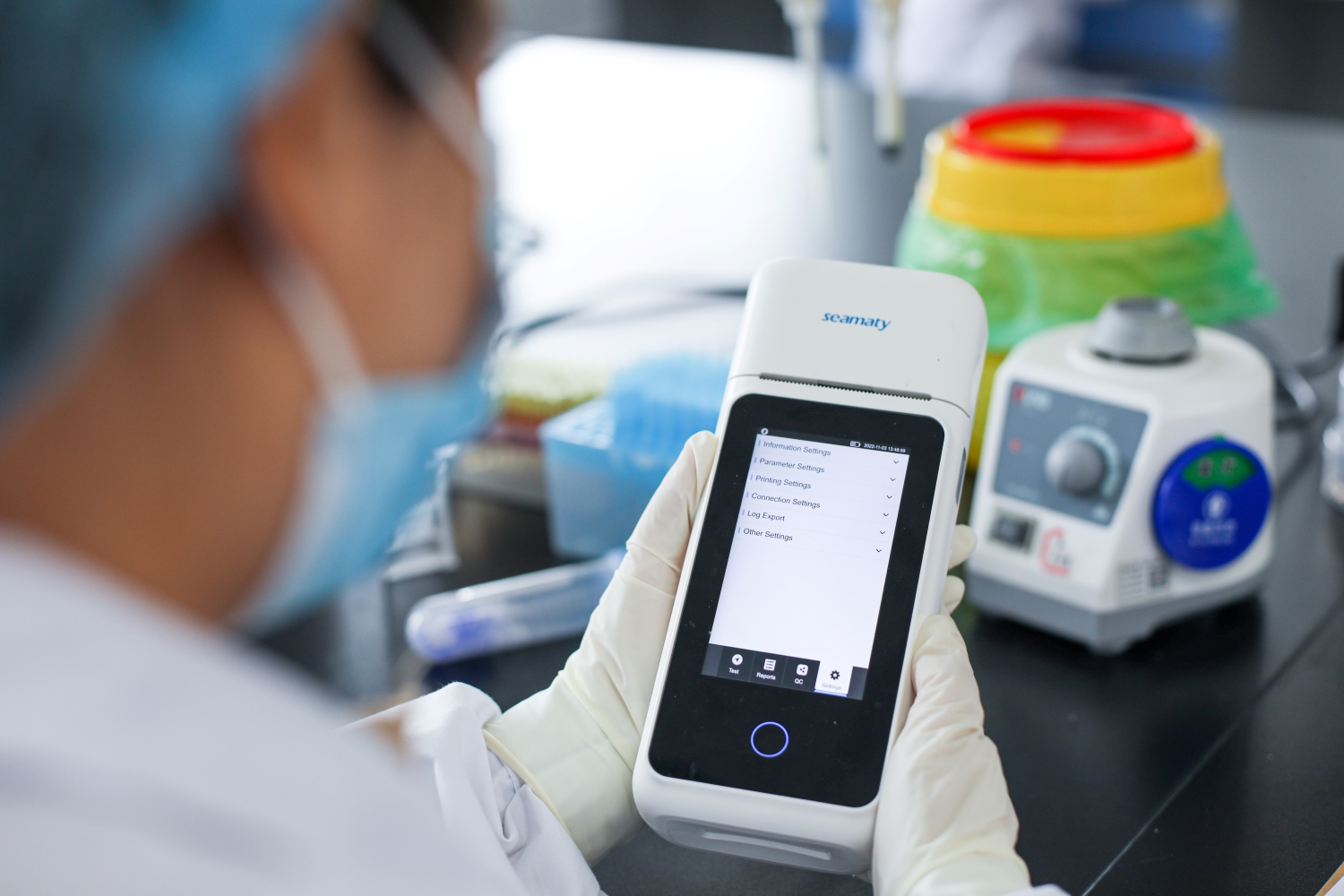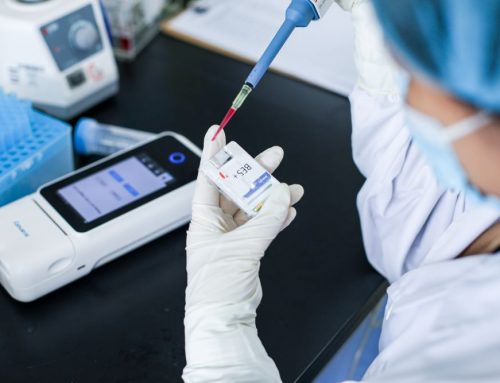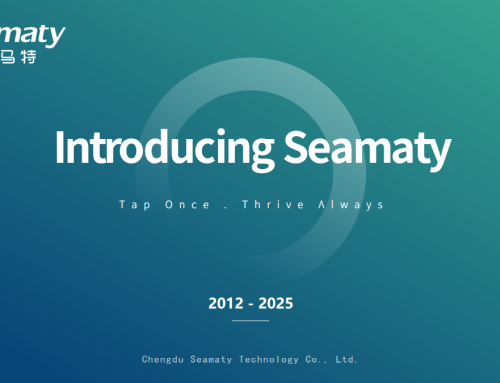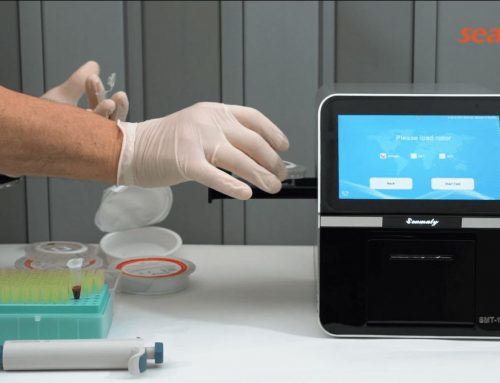Blood gas and electrolyte analyzers play a critical role in modern healthcare, widely used in emergency departments, intensive care units, operating rooms, and other clinical settings. These devices detect blood gas components (e.g., oxygen partial pressure, carbon dioxide partial pressure) and electrolyte levels (e.g., sodium, potassium, calcium ions), providing essential support for assessing patients’ respiratory, metabolic status, and acid-base balance with rapid and accurate physiological parameters.
This article focuses on comparing the advantages and limitations of the Seamaty SG1 blood gas & electrolyte analyzer with internationally recognized brands such as Abbott, Siemens, Edan, Radiometer, and Instrumentation Laboratory, offering comprehensive and objective insights for healthcare institutions in device selection.
Product Overview
Abbott i-STAT
A handheld blood gas analyzer widely used in hospitals, clinics, and emergency centers. It delivers fast and accurate analysis of blood gas, electrolytes, and other critical parameters.
Siemens EPOC
A high-performance, portable multi-parameter blood gas analyzer that provides rapid and precise measurements of blood gases, electrolytes, and metabolites.
Seamaty SG1
A portable blood gas & electrolyte analyzer featuring advanced sensor technology for reliable results, a user-friendly interface, and simple operation. Ideal for diverse medical environments.
Edan i15
A rapid whole-blood analyzer designed for healthcare professionals, measuring blood gases, electrolytes, and metabolites.
Radiometer ABL9
A high-performance blood gas analyzer with fast, accurate results, low sample volume, and extensive parameter options. Dominates ~30% of the global blood gas market.
Instrumentation Laboratory GEM 3500
A leading brand after Radiometer, with global sales in the billions.
Product Comparison
Key Features of Blood Gas Analyzers
| Brand | Seamaty | Abbott | Siemens | Edan | Radiometer | IL |
| Model | SG1 | i-STAT | EPOC | i15 | ABL9 | GEM 3500 |
| Technology | Microfluidic dry chemistry | Microfluidic dry chemistry | Microfluidic dry chemistry | Microfluidic dry chemistry | Liquid reagent packs & electrodes | Liquid reagent packs & electrodes |
| Reagent Form | Single-use | Single-use | Single-use | Single-use | 100/300/600/900 tests | 75/150/300/450 tests |
| Consumables | Reagent cards | Reagent cards | Reagent cards | Reagent packs/cards | Reagent packs, wash solutions, calibrators, electrodes | Reagent packs, wash solutions, calibrators, electrodes |
| Standby Time | ≥180 days | — | 50 samples | ≥24 hrs | 15 samples (battery) | Requires power |
| Sample Volume | 100μL | 95μL | 90μL | 80μL | 70μL | 150μL |
| Test Speed | 50s | 120s | 35s | 55s | 35s | 100s |
Product Features, Advantages, and Limitations
| Product | Features & Advantages | Limitations |
| Seamaty SG1 | 1. Single-use reagent cards (no waste) 2. Direct arterial sampling 3. Room-temperature storage 4. 180-day standby 5. Compact (0.6kg) |
Limited test menu and parameter combinations |
| Abbott i-STAT | 1. Market leader with high recognition 2. Measures biochemistry and cardiac markers |
Expensive; requires external printer |
| Siemens EPOC | 1. Recognized brand 2. Measures creatinine/urea nitrogen |
Complex manual steps; limited test card options |
| Edan i15 | 1. Versatile sample types 2. Fast results 3. Auto-sampling from primary tubes |
Large size; short standby; manual calibration |
| Radiometer ABL9 | 1. Market pioneer (30% share) 2. High sales volume |
Complex maintenance; large reagent packs (1-month expiry) |
| IL GEM 3500 | 1. Strong brand recognition 2. High sales volume |
Large reagent packs (3-week expiry); cannot detect chloride ions |
Summary
The Seamaty SG1 stands out among international brands for its unique advantages:
- Ease of Use: Simplified operation with direct sampling.
- Cost Efficiency: No reagent waste and affordable pricing.
- Portability: Ultra-lightweight (0.6kg) with long standby.
- Reliability: Room-temperature storage and stable performance.
For institutions prioritizing mobility, ease of use, and cost-effectiveness, the SG1 is a compelling choice. However, for facilities requiring extensive parameter menus or high-throughput testing, established brands like Radiometer or Abbott may be preferable despite higher costs.





Leave A Comment